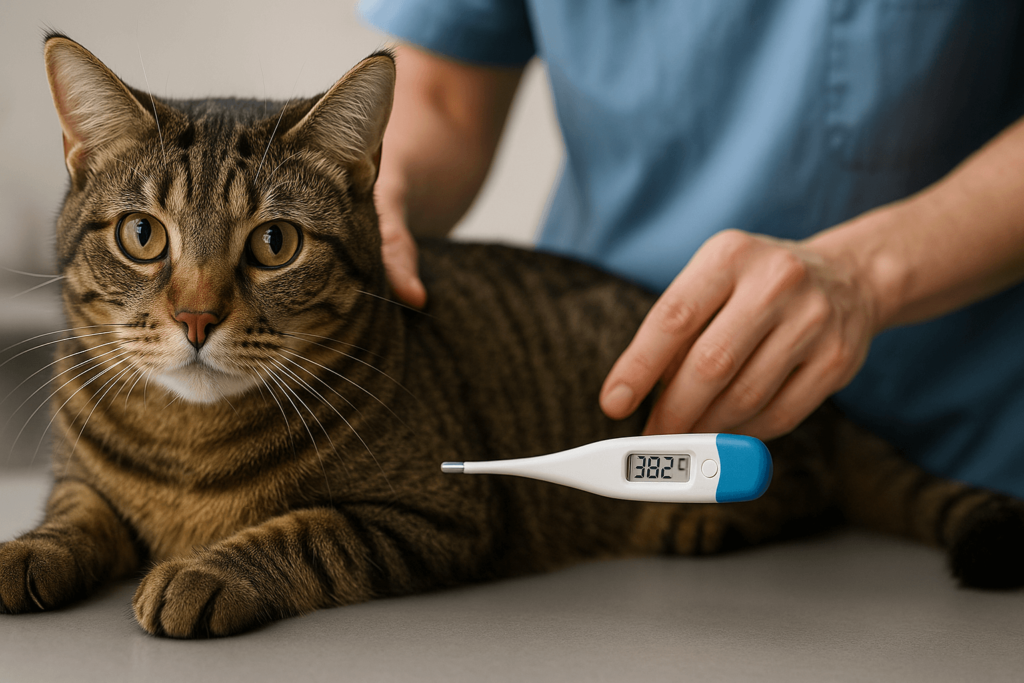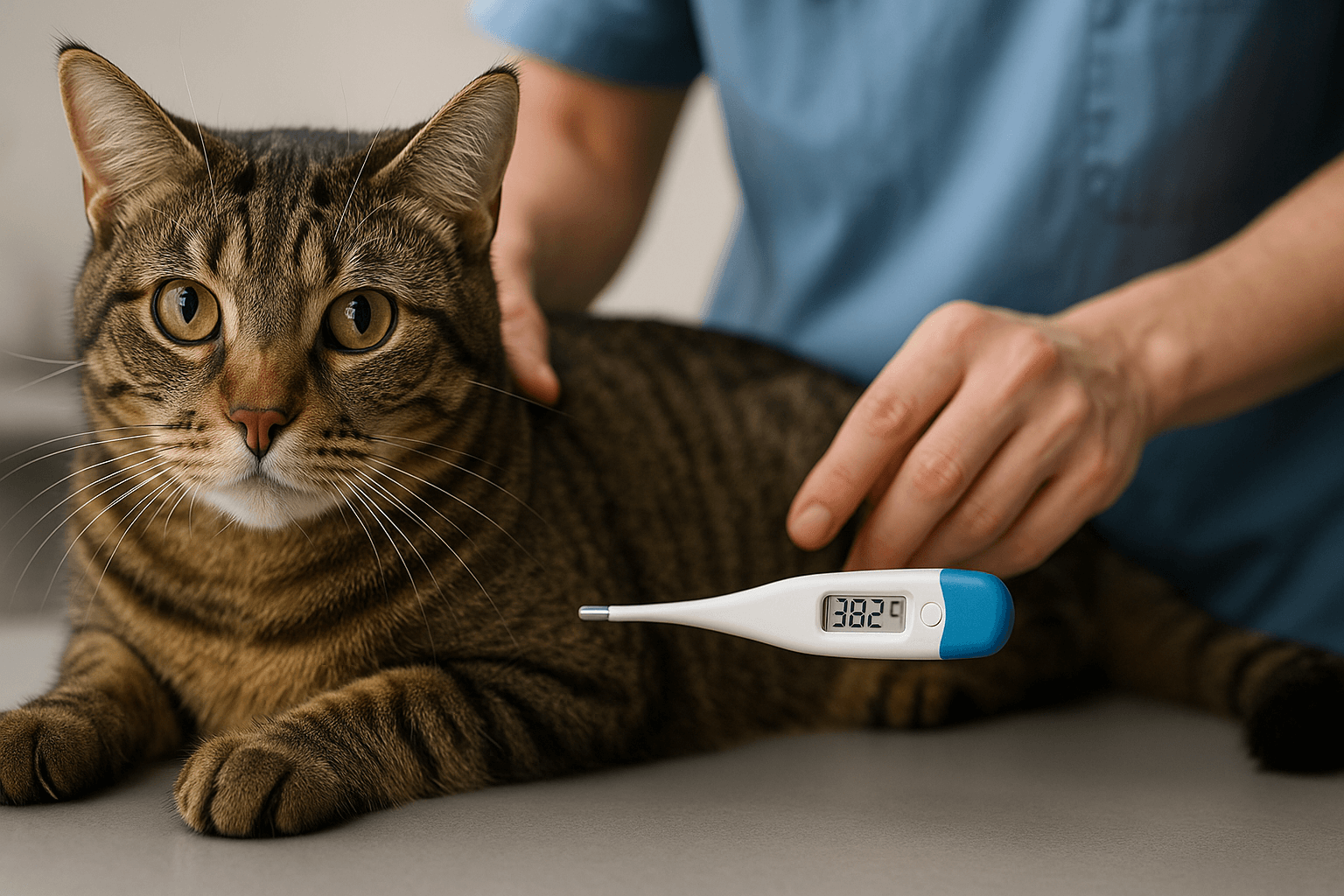Understanding Cat Body Temperature
Cats are fascinating creatures, and their body temperature plays a crucial role in maintaining their overall health. Unlike humans, cats have a slightly higher baseline body temperature, which can vary depending on factors like age, activity level, and environmental conditions. Monitoring your cat’s body temperature is an essential part of pet care, as it can help you detect potential health issues early. Whether you’re a new cat owner or an experienced feline enthusiast, understanding what’s normal—and what’s not—can make a significant difference in your cat’s well-being. Let’s delve into the specifics of cat body temperature and how to ensure your furry friend stays healthy and comfortable.
What Is a Normal Cat Body Temperature?
A cat’s body temperature typically falls within a specific range, but slight variations are normal depending on individual circumstances. Here’s what you need to know about what constitutes a healthy temperature for your feline companion.
Normal Range:
A cat’s normal body temperature ranges between 100.5°F and 102.5°F (38°C to 39.2°C). Anything outside this range may indicate an issue.Higher Temperatures:
Temperatures above 103°F (39.4°C) may suggest a fever, often caused by infections or inflammation.Lower Temperatures:
A body temperature below 100°F (37.8°C) could indicate hypothermia, especially in cold environments or during illness.Age Considerations:
Kittens tend to have slightly higher body temperatures than adult cats, as their bodies work harder to maintain warmth.Activity Levels:
Physical activity, stress, or excitement can temporarily elevate a cat’s body temperature without indicating illness.
Understanding these factors helps you determine whether your cat’s temperature is within a healthy range or requires further attention.

How to Measure Your Cat’s Body Temperature Safely
Measuring your cat’s body temperature might seem daunting, but with the right tools and techniques, it can be done safely and effectively. Follow these steps to ensure accurate readings and minimize stress for your pet.
Use a Digital Thermometer:
Avoid glass thermometers, as they can break. Opt for a digital thermometer designed for pets.Lubricate the Thermometer:
Apply a small amount of petroleum jelly or water-based lubricant to the thermometer tip for easier insertion.Secure Your Cat Properly:
Gently hold your cat in a comfortable position, ensuring they feel safe and supported during the process.Insert the Thermometer Carefully:
Gently insert the thermometer about one inch into the rectum while keeping your cat calm and still.Reward Your Cat Afterward:
Offer treats, praise, or affection to create positive associations with the experience.
By following these guidelines, you can accurately measure your cat’s temperature without causing unnecessary discomfort.
Check this guide 👉How Long Does a Cat Cold Last? Best 7 Expert Tips!
Check this guide 👉Understanding Cat Cold Treatment: Best 7 Health Tips!
Check this guide 👉How Cold Is Too Cold for Cats? Best 7 Tips!
Signs of High Body Temperature | Signs of Low Body Temperature |
|---|---|
Panting or rapid breathing | Lethargy or sluggishness |
Warm ears or paws | Shivering or trembling |
Loss of appetite | Cold extremities |
Vomiting or diarrhea | Weakness or collapse |
Restlessness or agitation | Slow heart rate |
Causes of Abnormal Cat Body Temperature
Abnormal body temperature in cats can stem from various causes, ranging from environmental factors to underlying health conditions. Identifying the root cause is critical for addressing the issue promptly.
Fever (High Temperature):
Infections, such as urinary tract infections or respiratory illnesses, are common culprits behind fever in cats.Heatstroke:
Prolonged exposure to high temperatures can lead to dangerously elevated body temperatures.Hypothermia (Low Temperature):
Exposure to cold environments or wet conditions increases the risk of hypothermia, especially in young or elderly cats.Toxins or Poisoning:
Ingesting harmful substances can disrupt your cat’s internal systems, leading to abnormal temperature fluctuations.Chronic Health Issues:
Conditions like hyperthyroidism or kidney disease may affect your cat’s ability to regulate their body temperature.
Recognizing these potential causes helps you take swift action to protect your cat’s health.
Preventing Temperature-Related Issues in Cats
Taking proactive steps to maintain your cat’s body temperature can prevent many health problems. These preventive measures ensure your cat stays comfortable year-round.
Provide a Comfortable Environment:
Keep your home at a moderate temperature, avoiding extremes of heat or cold.Monitor Outdoor Time:
Limit outdoor exposure during extreme weather conditions to reduce the risk of heatstroke or hypothermia.Ensure Proper Hydration:
Always provide fresh water to help your cat regulate their body temperature naturally.Watch for Behavioral Changes:
Pay attention to signs of discomfort, such as excessive grooming or seeking warm/cool spots, which may indicate temperature-related stress.Schedule Regular Vet Checkups:
Routine veterinary visits help catch underlying health issues that could affect your cat’s ability to regulate their temperature.
By implementing these strategies, you can safeguard your cat against temperature-related complications.
Signs of a Healthy Cat
Monitoring your cat’s overall health goes beyond just checking their body temperature. Here are some additional signs that indicate your cat is thriving.
Shiny Coat:
A glossy, clean coat reflects good nutrition and skin health.Bright Eyes:
Clear, bright eyes free of discharge are a sign of vitality and wellness.Good Appetite:
Consistent eating habits show that your cat is receiving adequate nutrition.Playful Behavior:
Active play and curiosity demonstrate mental and physical well-being.Regular Grooming Habits:
Cats who groom themselves frequently are typically healthy and content.
These indicators complement temperature checks, giving you a fuller picture of your cat’s health.
Common Misconceptions About Cat Body Temperature
Many myths surround cat body temperature, leading to confusion among pet owners. Clarifying these misconceptions ensures better care for your furry friend.
Myth: Cats Don’t Get Fevers:
Cats can indeed develop fevers, though they may not exhibit obvious symptoms like humans.Myth: Warm Ears Mean Fever:
Warm ears alone aren’t a reliable indicator; a full temperature check is necessary.Myth: Indoor Cats Can’t Overheat:
Even indoor cats can suffer from heatstroke if left in poorly ventilated spaces.Myth: Hypothermia Only Happens Outdoors:
Indoor cats exposed to drafts or cold floors can also experience hypothermia.Myth: All Cats Have the Same Temperature Range:
Individual cats may vary slightly based on age, breed, and other factors.
Dispelling these myths empowers you to make informed decisions about your cat’s care.
Emergency Situations Related to Body Temperature
In certain cases, abnormal body temperature can escalate into life-threatening emergencies. Knowing how to respond is critical for your cat’s survival.
Heatstroke Symptoms:
Look for excessive panting, drooling, vomiting, or collapse during hot weather.Hypothermia Warning Signs:
Watch for shivering, lethargy, stiff muscles, or difficulty breathing in cold conditions.Immediate First Aid for Heatstroke:
Move your cat to a cool area, apply damp cloths, and offer water—but avoid ice-cold baths.First Aid for Hypothermia:
Wrap your cat in warm blankets and place them near a gentle heat source, like a heating pad set on low.When to Seek Veterinary Help:
If symptoms persist or worsen despite first aid, contact your vet immediately for professional assistance.
Being prepared for emergencies ensures you can act quickly to save your cat’s life.
Frequently Asked Questions About Cat Body Temperature
What should I do if my cat has a fever?
Contact your veterinarian immediately, as fevers can indicate serious health issues requiring professional treatment.
Can I use a human thermometer for my cat?
Yes, but only if it’s a digital thermometer. Never use mercury thermometers, as they pose a safety risk.
How can I cool down my cat in hot weather?
Provide cool water, shade, and damp towels to help your cat stay comfortable during heatwaves.
Why does my cat feel cold to the touch?
Feeling cold could indicate hypothermia or poor circulation. Consult your vet if this persists.
Is panting normal for cats?
Occasional panting is normal after exercise, but persistent panting may signal overheating or respiratory distress.
Prioritizing Your Cat’s Temperature Health
Understanding your cat’s body temperature is a vital aspect of responsible pet ownership. By recognizing normal ranges, identifying potential issues, and taking preventive measures, you can ensure your feline friend remains happy and healthy. Whether it’s providing a cozy indoor environment or seeking veterinary advice when needed, every step you take contributes to your cat’s overall well-being. With proper care and attention, you can enjoy many joyful years alongside your beloved companion.
Canned Pumpkin for Cat Diarrhea: Best 7 Expert Tips! Natural remedy to firm stools, soothe upset bellies, and support gut health safely.
Can a Cat Give You Scabies? Best 7 Expert Tips! Discover the truth about feline mites, human skin risks, and how to protect yourself—without panic.
Cat Flea vs Human Flea: Best 7 Expert Tips! Discover the truth about bites, species, and how to eliminate infestations for good.
Weird Cat Behaviors: Best 7 Expert Tips! Discover why cats do strange things—and how to understand, not punish, their instincts for a happier home.





